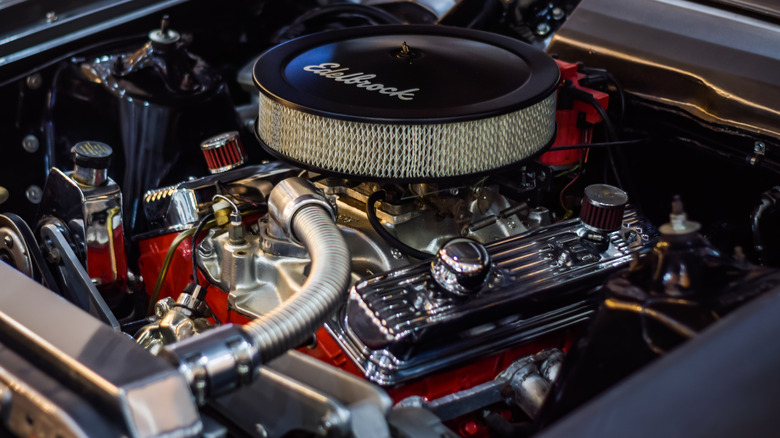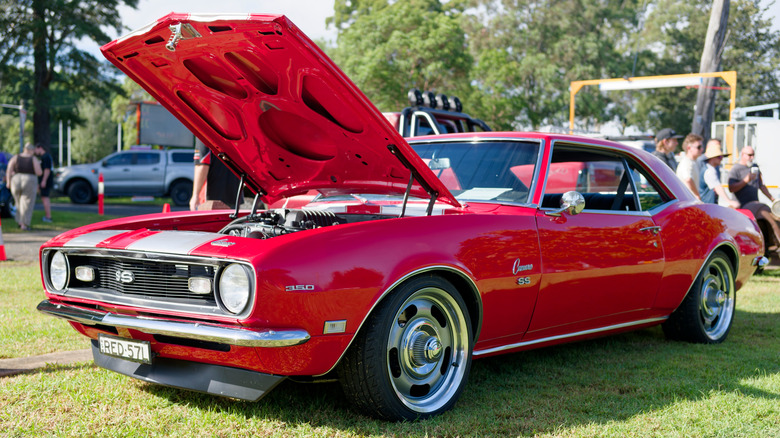What's The Difference Between The Pontiac 350 & Chevy 350 Engine?
When Chevrolet introduced its 350 cubic-inch small block engine in 1967, it started a phenomenon that lasts even today. Pontiac's 350, introduced in 1968, never saw the same success and was phased out by 1978. The Pontiac engine block itself was very successful, though. There was only one Pontiac block size, and it continued on as a 400 cubic-inch engine through 1981.
The Chevrolet 350 is a bit smaller than the Pontiac engine. The small block measures 26 inches wide, 28 inches long, and 27 inches high, while the Pontiac 350 was 25.5 inches wide, 32 inches long, and 30 inches high. Power output was likewise different: In its heyday, the Pontiac was rated at 320 horsepower when a 4-barrel carburetor fed it air. The first Generation Chevrolet 350 started at 295 horsepower with the same carburetor on it. However, in its current form, the Chevrolet 350 is capable of much greater output.
Highlights of the Chevy 350 V8
The Chevrolet 350 came about as a stroked-out 327. Both have a 4-inch bore, but the stroke on the 350 is 3.48 inches, versus 3.25 inches on the 327. It was first placed in the L48-optioned Camaro Super Sport with a claimed 295 horsepower. Higher powered versions of the engine appeared in the next few years, peaking with the LT1, which hit 370 claimed horsepower in the 1970 Corvette. Lower powered versions existed from the same time, and the perfect storm of environmental controls, increasing gas prices, and higher insurance that came in with the 1970s ensured that lower-powered versions were the norm.
By the 1980s, Chevrolet's 350 was known in metric form as the 5.7-liter engine. GM used the 5.7-liter across its divisions, and especially in the Pontiac Firebird line. In 1992, the Generation II replacement appeared, followed by the LS series in 1997. However, the Generation I version is still with us, in a sense.
A Chevrolet 350, new in the crate
The Chevrolet 350, though it has been replaced multiple times, is still a popular engine. The Generation I engine is not available off the dealer's lot any longer, but GM still sells it via Chevrolet Performance Parts. Currently, there are four turnkey versions available and ready to drop into your project car; they range between 350 and 420 horsepower variants, and can reach up to 408 lb-ft of torque.
There is a catch, though, as these are competition engines and not designed (emissions-wise) for street use. Chevrolet warns that their use on public streets is probably going to violate federal and state emissions laws.
If street-ability is a concern, or the price tag of a new engine puts it out of your league, rebuilding the engine or buying a used engine are also options. Chevrolet has built over 100 million small-block engines, and with Chevrolet still selling this engine in particular, parts for it are still readily available as well.


